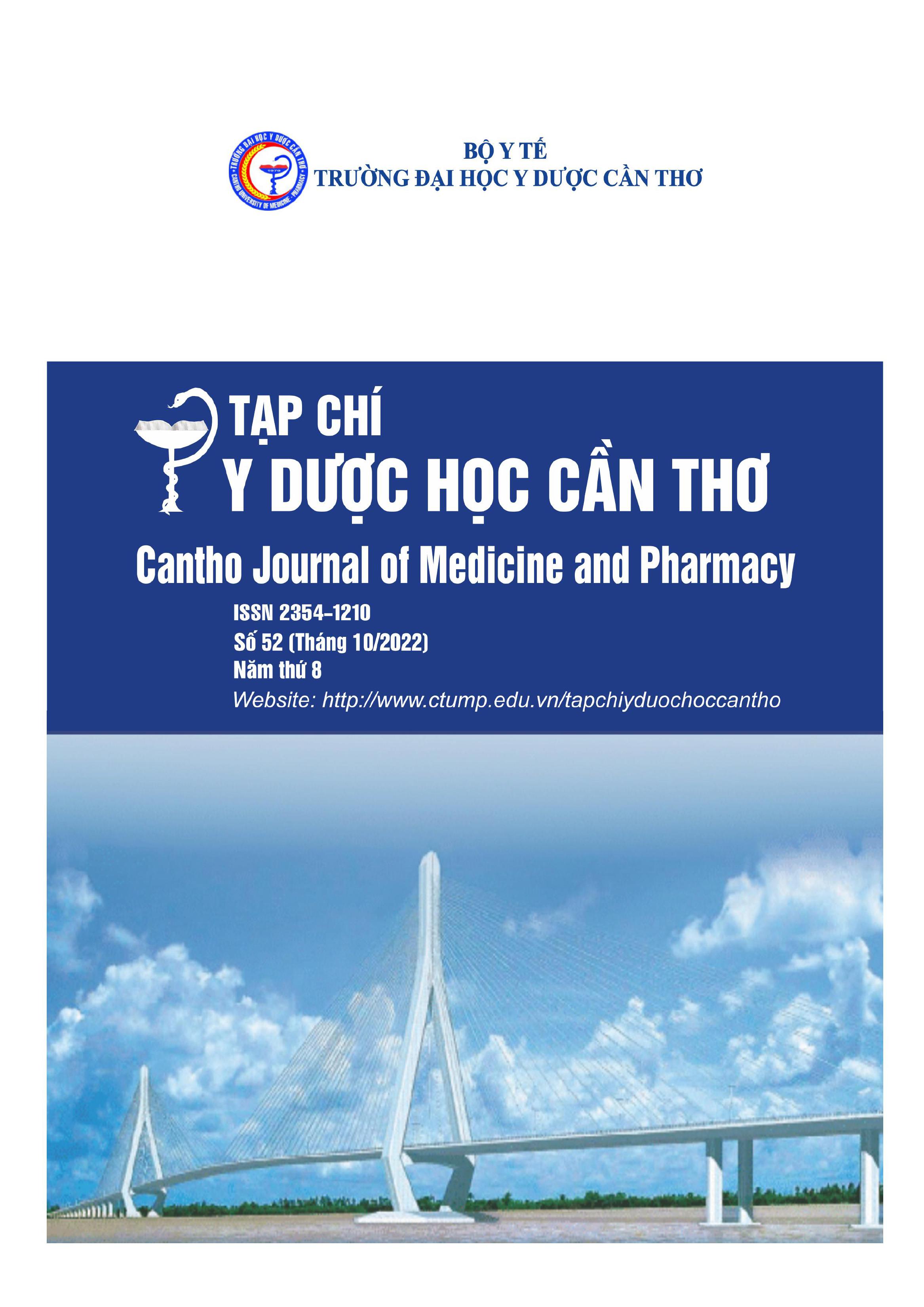COMPUTED TOMOGRAPHY ANGIOGRAPHY AND PERFUSION IMAGE CHARACTERISTICS IN PATIENTS WITH ACUTE ISCHEMIC STROKE AT CAN THO CENTRAL GENERAL HOSPITAL IN 2020-2022
Main Article Content
Abstract
Background: Computed tomography angiography (CTA) and perfusion (CTP) can provide information about the site of occlusion and tissue viability – the key to the treatment of acute ischemic stroke. Objectives: To describe CTA, CTP image characteristics and to find out some factors related to signs of acute ischemic stroke. Materials and methods: Prospective descriptive cross-sectional study of 39 patients treated at Can Tho Central General Hospital from 8/2020 to 5/2022. Results: Middle cerebral artery occlusion in 64.1%. CTP showed evidence of hypoperfusion in 87.2%. The NIHHS score was positively correlated with penumbra volume and was statistically significant between lesions ≥ 1/3 and <1/3 hemisphere. Conclusions: The results highlight the importance of CTA, CTP in diagnosis. The NIHSS score is a predictor of perfusion deficits and patients with low scores could also have artery occlusion
Article Details
Keywords
CT Angiography, CT Perfusion, acute ischemic stroke
References
2. Trần Anh Tuấn, Nguyễn Thị Thu Trang, Vũ Đăng Lưu (2018), “Nghiên cứu áp dụng chụp cụp cắt lớp vi tính mạch não nhiều pha chẩn đoán nhồi máu não tối cấp”, Tạp chí Y học Việt Nam, 462(2), tr.144-148.
3. Trần Trọng Anh Tuấn, Nguyễn Thị Như Trúc, Phạm Văn Năng (2018), “Đánh giá kết quả điều trị nhồi máu não cấp tại bệnh viên Đa khoa Trung ương Cần Thơ năm 2016-2018”, Tạp chí Y Dược học Cần Thơ, 16, tr.1-7.
4. Albers GW, Marks MP, et al. (2018), “Thrombectomy for Stroke at 6 to 16 Hours with Selection by Perfusion Imaging”, New England Journal of Medicine, 378(8), pp.708-718.
5. Campbell BCV, Weir L, et al. (2013), “CT perfusion improves diagnostic accuracy and confidence in acute ischaemic stroke”, Journal Neurol Neurosurgery Psychiatry, 84(6), pp.613-618.
6. Furlanis G, Ajčević M, et al. (2018), “Ischemic Volume and Neurological Deficit: Correlation of Computed Tomography Perfusion with the National Institutes of Health Stroke Scale Score in Acute Ischemic Stroke”, Journal of Stroke and Cerebrovascular Diseases, 27(8), pp.2200-2207.
7. Heldner MR, Zubler C, et al. (2013), “National institutes of health stroke scale score and vessel occlusion in 2152 patients with acute ischemic stroke”, Stroke, 44(4), pp.1153-1157.
8. Johnson CO, Nguyen M, et al. (2019), “Global, regional, and national burden of stroke, 1990– 2016: a systematic analysis for the Global Burden of Disease Study 2016”, Lancet Neurology, 18(5), pp.439-458.
9. Nagakane Y, Christensen S, et al. (2011), “EPITHET: Positive result after reanalysis using baseline diffusion-weighted imaging/perfusion-weighted imaging co-registration”, Stroke, 42(1), pp.59-64.
10. Nogueira RG, Jadhav AP, Haussen DC, et al. (2018), “Thrombectomy 6 to 24 Hours after Stroke with a Mismatch between Deficit and Infarct”, New England Journal of Medicine, 378(1), pp.11-21.
11. Shen J, Li X, Li Y, Wu B (2017), “Comparative accuracy of CT perfusion in diagnosing acute ischemic stroke: A systematic review of 27 trials”, PLoS One, 12(5), pp.1-17.
12. Waqas M, Mokin M, et al. (2020), “Large Vessel Occlusion in Acute Ischemic Stroke Patients: A Dual-Center Estimate Based on a Broad Definition of Occlusion Site”, Journal of Stroke & Cerebrovascular Diseases, 29(2), 104504.
13. Wintermark M, Fischbein NJ, et al. (2005), “Accuracy of dynamic perfusion CT with deconvolution in detecting acute hemispheric stroke”, American Jourrnal of Neuroradiology, 26(1), pp.104-112.
14. Yi CA, Na DG, et al. (2002), “Multiphasic Perfusion CT in Acute Middle Cerebral Artery Ischemic Stroke: Prediction of Final Infarct Volume and Correlation with Clinical Outcome”. Korean Journal of Radiology, 3(3), pp.163-170.
15. Yu Y, Han Q, et al. (2017), “Defining Core and Penumbra in Ischemic Stroke: A Voxel- and Volume-Based Analysis of Whole Brain CT Perfusion”, Scientific reports, 6, pp.1-7.


